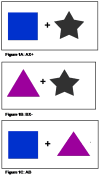Impaired fear inhibition is a biomarker of PTSD but not depression
- PMID: 20143428
- PMCID: PMC2841213
- DOI: 10.1002/da.20663
Impaired fear inhibition is a biomarker of PTSD but not depression
Abstract
Background: A central problem in posttraumatic stress disorder (PTSD) is a reduced capacity to suppress fear under safe conditions. Previously, we have shown that combat-related PTSD patients have impaired inhibition of fear-potentiated startle (FPS). Given the high comorbidity between PTSD and depression, our goal was to see whether this impairment is specific to PTSD, or a non-specific symptom associated with both disorders.
Methods: Fear-potentiated startle was assessed in 106 trauma-exposed individuals divided into four groups: (a) No diagnosis control, (b) PTSD only, (c) major depression (MDD) only, and (d) comorbid PTSD and MDD. We used a novel conditional discrimination procedure, in which one set of shapes (the danger signal) was paired with aversive airblasts to the throat, and different shapes (the safety signal) were presented without airblasts. The paradigm also included fear inhibition transfer test.
Results: Subjects with comorbid MDD and PTSD had higher FPS to the safety signal and to the transfer test compared to controls and MDD only subjects. In contrast to the control and MDD groups, the PTSD and comorbid PTSD and MDD groups did not show fear inhibition to safety cues.
Conclusions: These results suggest that impaired fear inhibition may be a specific biomarker of PTSD symptoms.
(c) 2010 Wiley-Liss, Inc.
Figures



References
-
- Kessler RC, Sonnega A, Bromet E, Hughes M, Nelson CB. Posttraumatic stress disorder in the national comorbidity survey. Archives of General Psychiatry. 1995;52:1048–60. - PubMed
-
- Kessler RC. Posttraumatic stress disorder: the burden to the individual and to society. J Clin Psychiatry. 2000;61(Suppl 5):4–12. discussion 3–4. - PubMed
-
- Breslau N, Davis GC, Peterson EL, Schultz LR. A second look at comorbidity in victims of trauma: the posttraumatic stress disorder-major depression connection. Biological Psychiatry. 2000;48:902–9. - PubMed
-
- APA. DSM-IV-TR: Diagnostic and Statistical Manual of Mental Disorders. Washington, D.C: American Psychiatric Press; 2000.
-
- Schnurr PP, Friedman MJ. An overview of research findings on the nature of posttraumatic stress disorder. Session: Psychotherapy in Practice. 1997;3:11–25.
Publication types
MeSH terms
Substances
Grants and funding
LinkOut - more resources
Full Text Sources
Other Literature Sources
Miscellaneous

